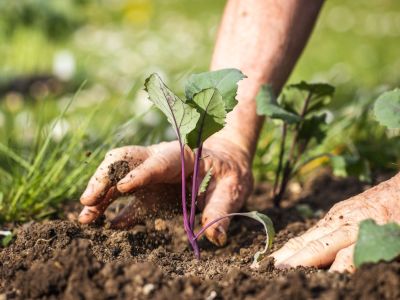What to Know Before Planting Fall Vegetables
Fall planting is different than spring planting simply because the crops will be dealing with a wide swing of weather conditions. Because of possible extremes of heat and cold, many gardeners turn to transplants. Sowing seeds can also be an option, but to ensure germination, sow the seeds deeper than recommended for spring plantings and sow more thickly than usual. A thick planting will help ensure germination and can then be thinned to achieve proper spacing. Place a thin layer of mulch over the sown bed to protect the seeds from wash out and soil compaction if the season is rainy, or to retain moisture if the fall is particularly warm.
What are the Best Crops to Plant in Fall?
When deciding what crops to sow for the fall, look to your USDA zone and the length of time to harvest. You need to be aware of the average first frost date for your region and if needed, to be prepared to cover crops if a freeze is impending. Some crops can be picked when young such as beets, carrots, lettuce, spinach and turnips, so these are less of a concern. Carrots, broccoli, cauliflower, lettuce, mustard greens and spinach can handle a light frost, and still others like beets, bunching onions, collards, kale, and radishes are tolerant of a hard frost. Other cool season veggies suited for fall planting are arugula, bok choy, Brussels sprouts, cabbage, kohlrabi, parsley, and peas.
Latest to Plant Vegetables
The latest time to plant fall vegetables varies according to your region. To ensure you will have enough time for growth prior to harvest look on the seed packet for the number of days until maturity. Look for varieties that have the fewest days to maturity. As a general rule, from late July through early August you can sow beans, cucumbers and summer squash and transplant broccoli, cauliflower and cabbage. From early to mid-August plan to plant carrots and beets. Lettuce, radish, turnip and spinach can all be planted up to early September. Again the best barometer is to look at the frost date for your area and compare it to the number of days until maturity for a particular crop.
